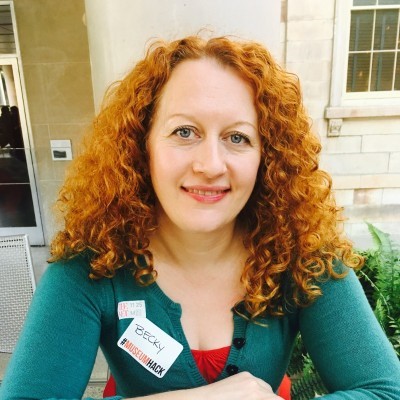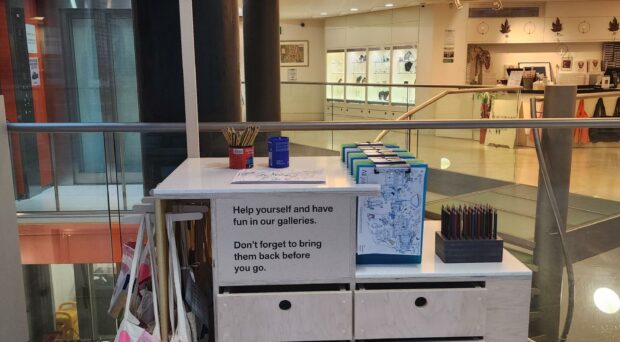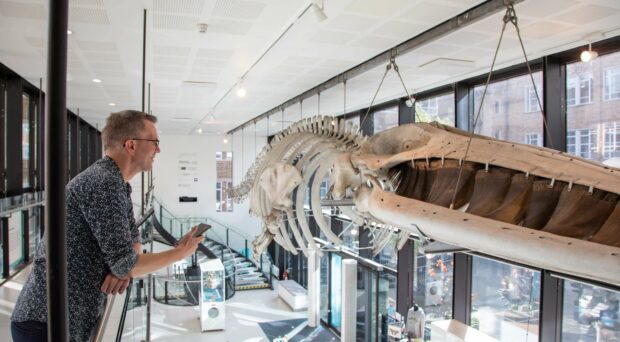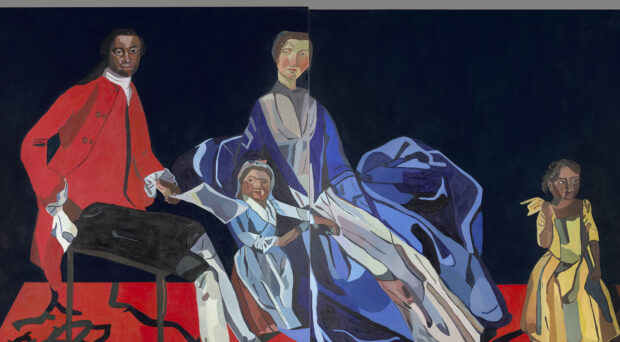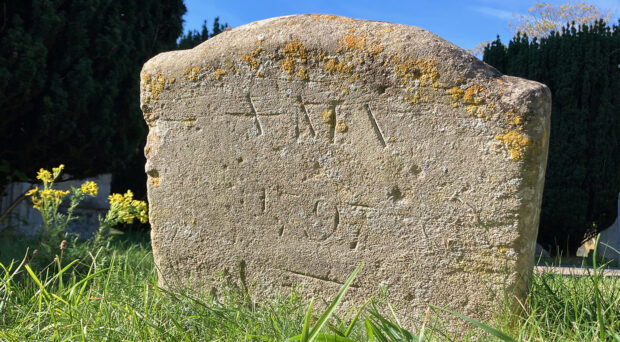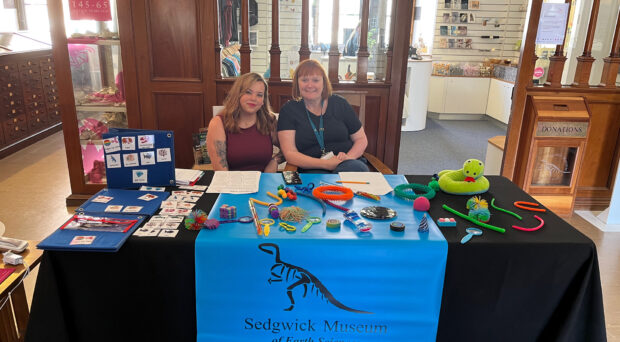What does wellbeing look like in a museum? In spring and summer 2025, the Fitzwilliam Museum invited young adults to help answer this question, co-creating an immersive wellbeing pilot Happy Place designed to spark joy, connection and calm in a challenging world.
Happy Place is a collaborative participatory research project exploring how museums can support young adult wellbeing through co-designed creative experiences and sensory environments.
Prompted by rising mental health concerns in 16 to 25 year olds and a desire to engage more meaningfully with this audience, the Fitzwilliam Museum launched a research project to understand what wellbeing means for young adults – and how museums can help foster it.
The overall aim was to create a museum experience that felt welcoming, calming and empowering for young adults, while deepening understanding of their needs, values, and aspirations for cultural spaces.
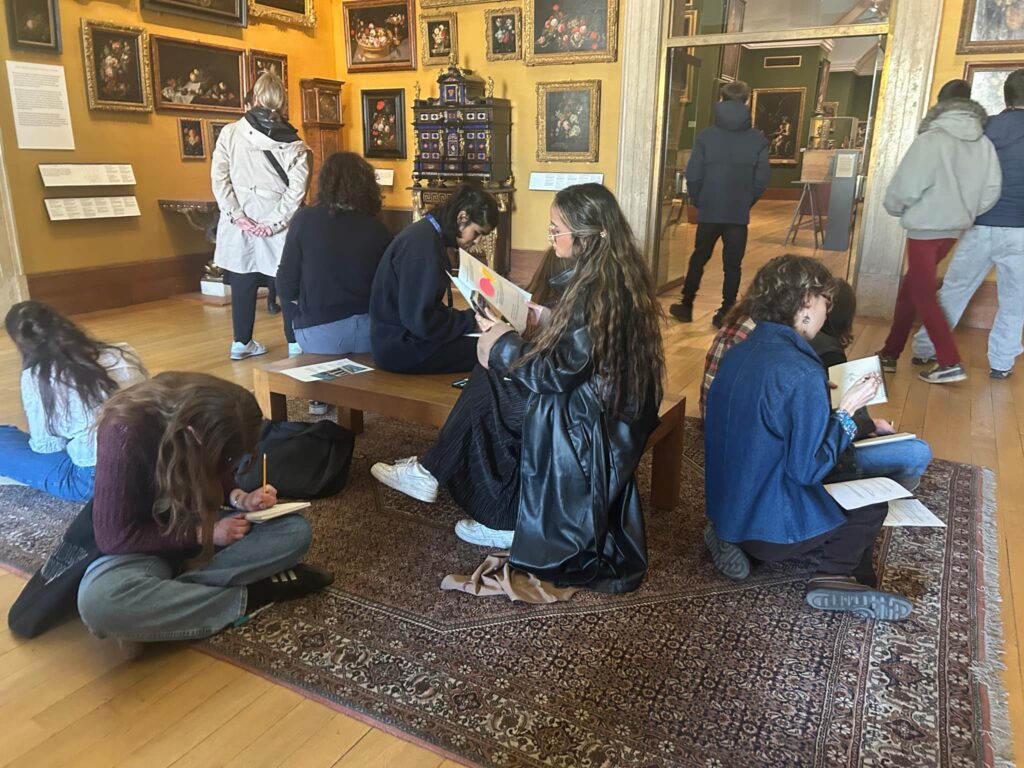
The project ran in two phases: research (September 2024 to March 2025) and co-creation and delivery (April to July 2025), culminating in a four-day public event – a pop-up immersive installation ‘Happy Place’ at the Fitzwilliam Museum exploring how museums can improve wellbeing and spark joy.
The research phase explored what wellbeing means for young adults in Cambridge, which factors are contributing to stress, anxiety, happiness and joy – and how museums can help.
Creative focus groups with 16 to 25 year olds and interviews with community partners helped us gather insight around what kind of wellbeing experiences people want and need and uncovered a strong desire for an immersive, sensory refuge – a place where people could escape their day to day worries and pressures. We also looked at which stories and objects in the Museum’s collection might best resonate with and support wellbeing programmes and experiences.
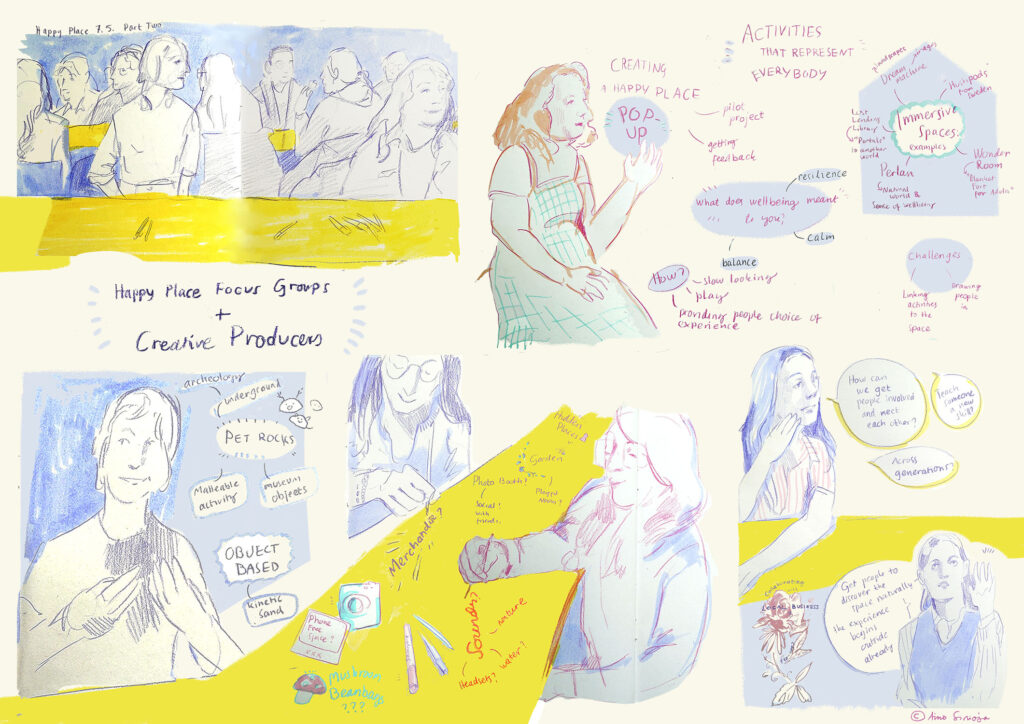
Happy Place Installation
The Happy Place installation brought together spaces for connection, creativity and calm using soothing sounds, calming visuals, an evocative smellscape, and unexpected sensory delights, encouraging visitors to wander through a magical overgrown garden and reflect, recharge and play.
Working closely with museum staff, a talented team of 49 young adults helped bring Happy Place to life as Creative Producers and community participants and were involved in every stage of the project, including research and concept design to hosting of Happy Place and our accompanying ‘Happy Hour’ wellbeing activity programme.
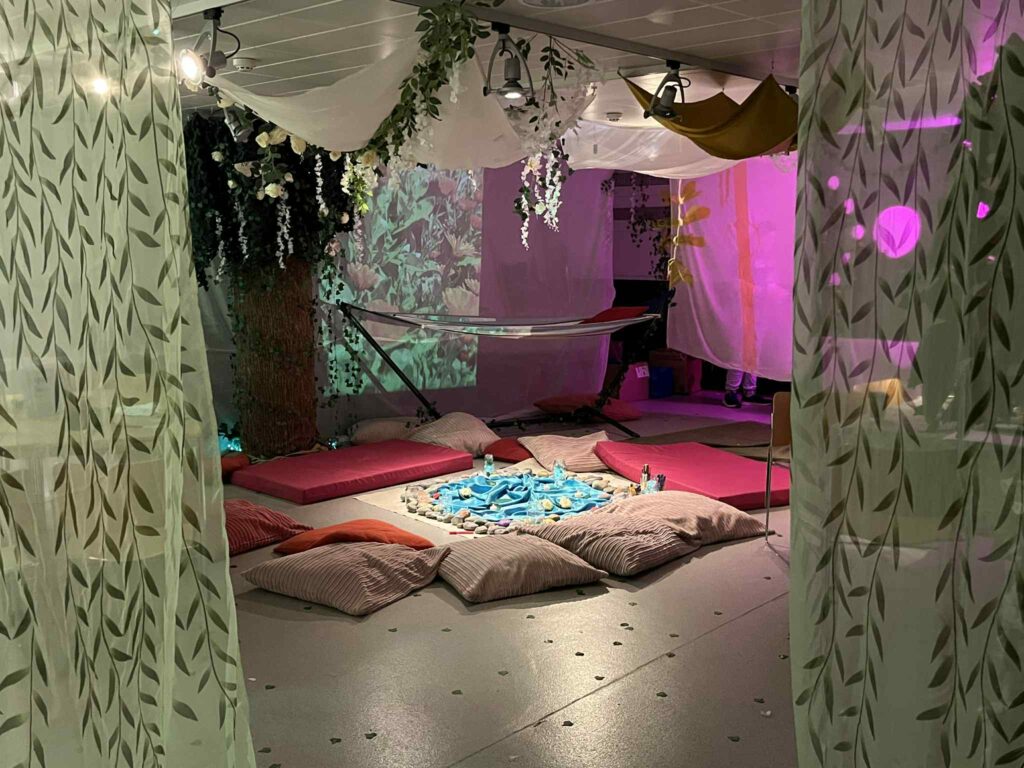
This programme included activities from yoga in the galleries, slow looking and mindful crafts such as rock painting, mini zen gardens, origami butterflies and nature inspired printmaking, to relaxing massage and the thoughtful and beautifully designed wellbeing wander around the Museum, called ‘Down the Garden Path.’
An interesting challenge was creating an overgrown garden in the studio at the Museum without using any real plants! Lots of donated and upcycled fabric, cardboard trees, hammocks and even a few garden gnomes helped to bring the nature theme to life and make the space feel inviting, playful, creative and relaxing.
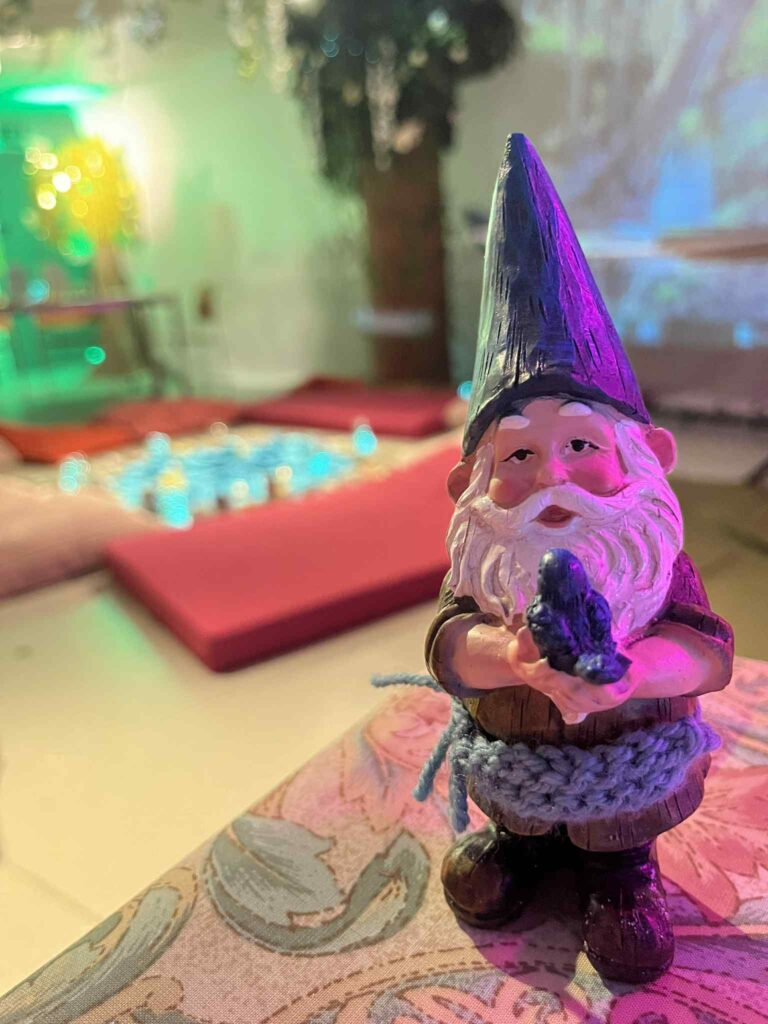
What did our participants think?
Of our Happy Place visitors, 100% stated that the experience successfully sparked joy and improved their mood, with people particularly appreciating the powerful emotional impact, opportunities for creative engagement, sensory experience, therapeutic elements and social connections the space provided.
“It lifted my mood as soon as I walked in.”
“This is absolutely amazing – best day ever – every museum needs a Happy Place.”
And participants agreed, with many telling us how the project offered a sense of relief, joy, creativity and connection during challenging times.
“This really helped me during a time of stress – the whole experience was just lovely.”
“It was a really creative and exciting project that helped me reconnect with my community. I’ve learnt new ways to calm myself and be happier.”
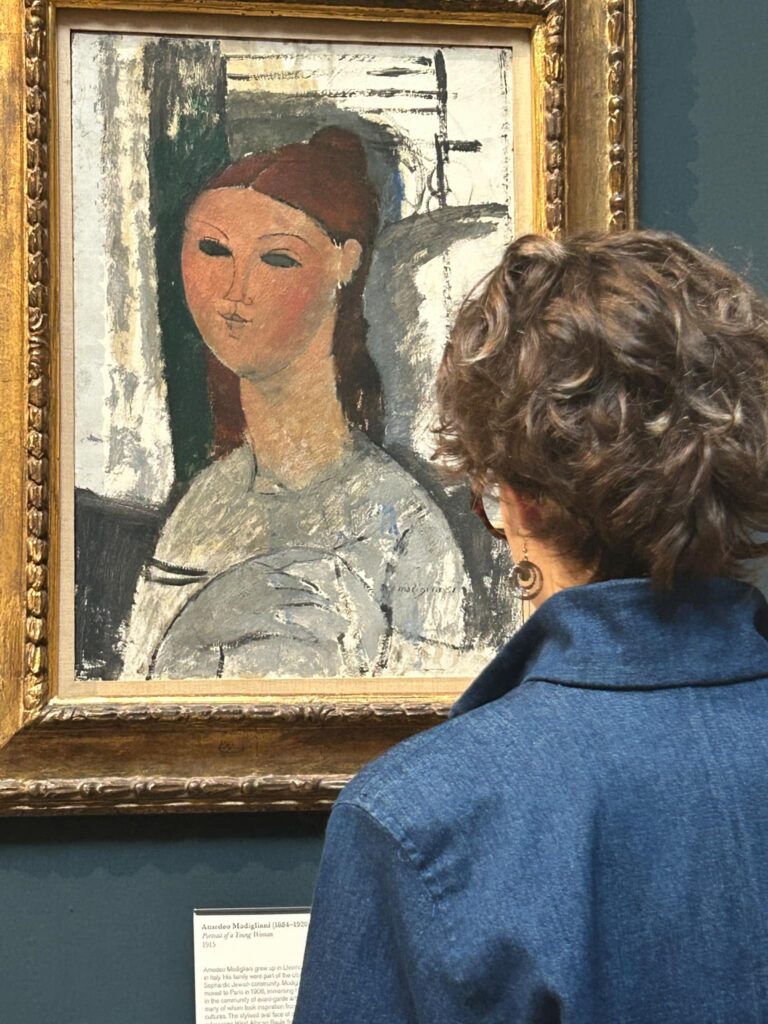
People also told us that the project had supported them to make new friends and helped them see the museum in a different light as a place of creative experimentation and belonging and somewhere they would visit more often.
The feedback from participants and visitors highlights the deep value Happy Place has offered – emotionally, socially, and creatively. There is a clear appetite for further wellbeing-focused programming, and the project has significantly strengthened the museum’s role as a space for joy, connection, and community.
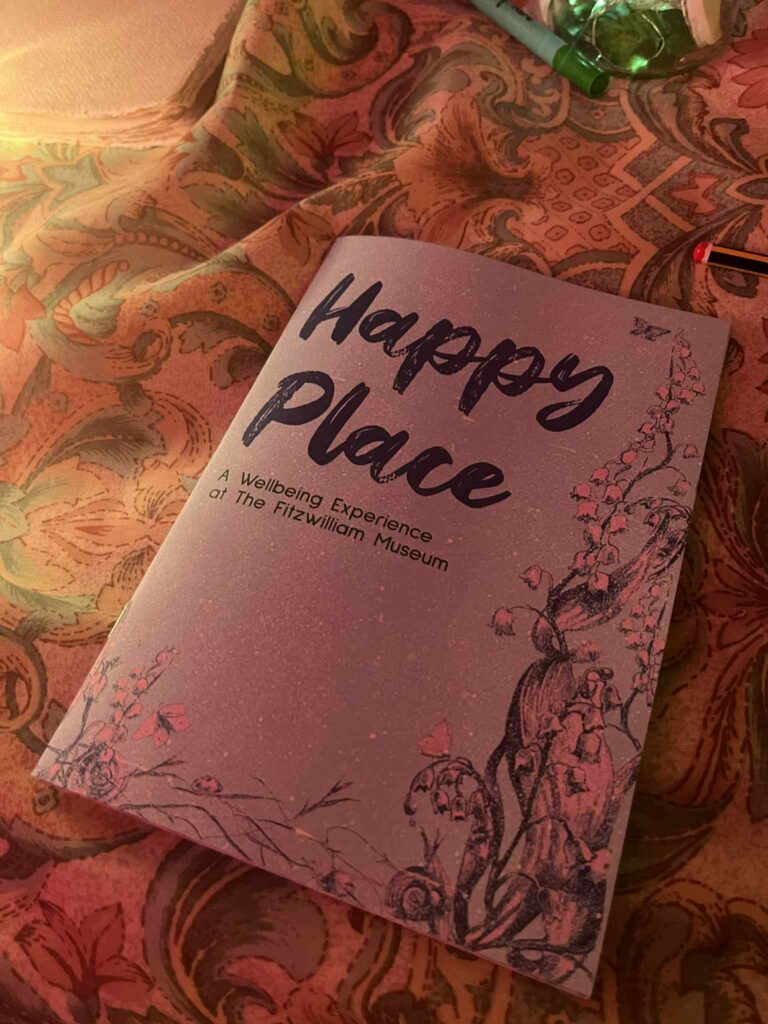
So what’s next for Happy Place?
There is clear appetite for more. Participants and visitors felt strongly that wellbeing and happiness should be a focus for museums, and wanted more Happy Place pop-ups and wellbeing programming. We’re currently exploring ways to build on the success of this pilot, both seasonally and in partnership with other organisations.
Want to collaborate or get involved in shaping what’s next? Please get in touch with Becky Jefcoate by email: rj477@cam.ac.uk

